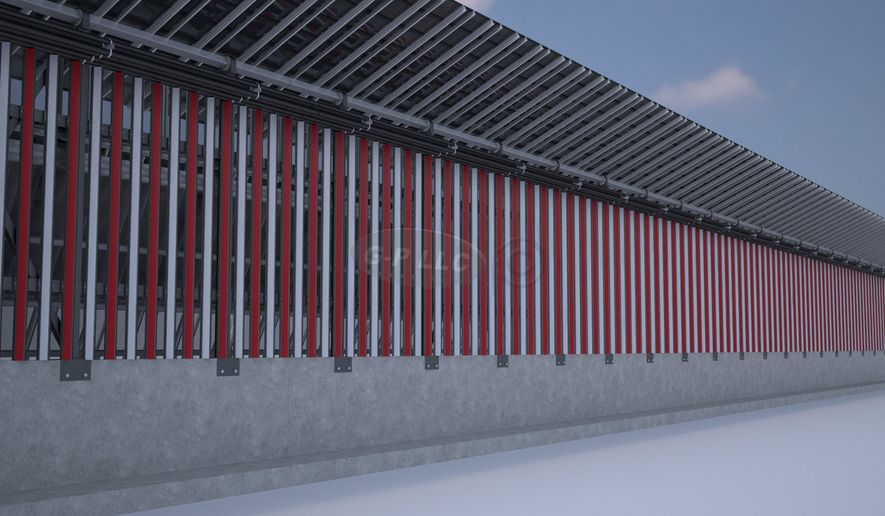OPINION:
Congressional Democrats love to spend money on solar power and infrastructure projects, and President Trump has given them something to think about — using the sun to power and pay for his border wall.
President Trump has floated the idea of incorporating solar panels into his proposed “big, beautiful wall” on the U.S.-Mexico border. Maybe he got the idea from Mary Poppins, who famously observed that “a spoonful of sugar helps the medicine go down in a most delightful way.” Such a border wall may be just the medicine needed to cure irritable-border syndrome.
With temperatures hitting 120 degrees in Phoenix, the first day of summer was just the time to offer a novel infrastructure suggestion. “I will give you an idea that nobody has heard about yet,” Mr. Trump told an audience Wednesday night in Cedar Rapids, Iowa. “The southern border: Lots of sun, lots of heat. We are thinking about building a wall as a solar wall, so it creates energy and pays for itself.” The president couldn’t resist giving himself a pat on the back. “Pretty good imagination, right? My idea!”
Well, not exactly. Two weeks earlier, such an idea came from Gleason Partners LLC, a Las Vegas architectural firm that’s among the hundreds of companies that have expressed interest in contracting the design and/or construction of the border wall. The Department of Homeland Security is expected to choose the finalists in the bidding competition soon, and Mr. Trump’s remarks could tilt the approval toward a proposal with some kind of solar power.
Portland, Ore.-based Elemental Energy estimates that a thousand miles of border wall fitted with 10-foot-high solar panels would generate 2,657.2 gigawatt-hours of electricity annually, worth $106 million a year. Elemental Energy co-owner John Grieser earlier this month told BusinessInsider.com that’s enough juice to power 220,000 average-sized homes for a year.
Other clean-energy advocates and infrastructure-finance specialists say a solar-powered wall could generate three to four times that much electricity. Gleason Partners says its solar-paneled wall could produce 2.0 megawatts of electricity per hour. Such a border wall would cost $6 million per mile to build and estimates it “will pay for itself in 20 years” by selling the electricity it would generate.
“And this way, Mexico will have to pay much less money,” Mr. Trump told his Iowa audience with a wink and a nod to his campaign pledge to make Mexico pay the wall. “And that’s good, right?”
Not bad, anyway. But many of the passionate advocates of “green” energy who champion solar power at every turn — even after the failure of Solyndra and other Obama-era solar-energy boondoggles — are suddenly skeptics and critics of a wall outfitted with solar panels. They raise concerns about the “inefficiency” of solar panels in a fixed position, rather than having them rotate to track the sun’s movement in the sky. They question whether there’s a sufficient market for the electricity, since relatively few Americans live on the border.
Whether the solar-panel proposal proves viable or not, it’s a welcome, outside-the-box alternative to the stale thinking Washington typically brings to problem-solving. That’s one distinct advantage of having a builder and businessman in the Oval Office. If the wall can pay for itself, so much the better. If not, any investment in the nation’s health and security is always a good one.




Please read our comment policy before commenting.